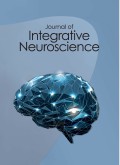Authors: Cho, Hohyun | Kang, Min-Koo | Ahn, Sangtae | Kwon, Moonyoung | Yoon, Kuk-Jin | Kim, Kiwoong | Jun, Sung Chan
Article Type:
Research Article
Abstract:
Due to the recent explosion in various forms of 3D content, the evaluation of such content from a neuroscience perspective is quite interesting. However, existing investigations of cortical oscillatory responses in stereoscopic depth perception are quite rare. Therefore, we investigated spatiotemporal and spatio-temporo-spectral features at four different stereoscopic depths within the comfort zone. We adopted a simultaneous EEG/MEG acquisition technique to collect the oscillatory responses of eight participants. We defined subject-specific retinal disparities and designed a single trial-based stereoscopic viewing experimental paradigm. In the group analysis, we observed that, as the depth increased from Level 1 to Level 3, there
…was a time-locked increase in the N200 component in MEG and the P300 component in EEG in the occipital and parietal areas, respectively. In addition, initial alpha and beta event-related desynchronizations (ERD) were observed at approximately 500 to 1000 msec, while theta, alpha, and beta event-related synchronizations (ERS) appeared at approximately 1000 to 2000 ms. Interestingly, there was a saturation point in the increase in cognitive responses, including N200, P300, and alpha ERD, even when the depth increased only within the comfort zone. Meanwhile, the magnitude of low beta ERD decreased in the dorsal pathway as depth increased. From these findings, we concluded that cognitive responses are likely to become saturated in the visual comfort zone, while perceptual load may increase with depth.
Show more
Keywords: Stereoscopic 3D, EEG/MEG, ERPs (Event-Related Potentials), neural oscillations
DOI: 10.3233/JIN-170018
Citation: Journal of Integrative Neuroscience,
vol. 16, no. 3, pp. 255-273, 2017
Price: EUR 27.50






